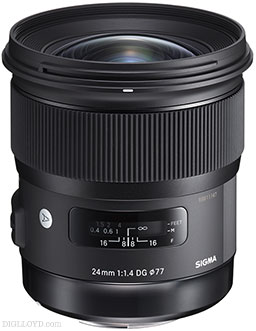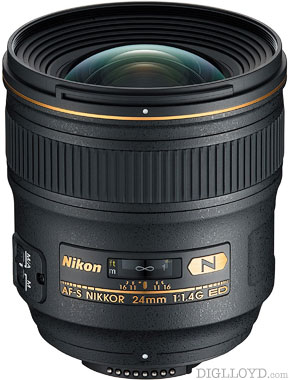Don’t Confuse Focusing Distance with Reproduction Ratio aka Magnification
Get Sigma 24mm f/1.4 Art at B&H Photo.
See my review of the Sigma 24mm f/1.4 Art in DAP (covered on both Nikon and Canon.
Damian S writes:
Thanks to you I am now on the waiting list for the new Sigma 24mm for Nikon.
I wanted to give you one thought: I was an early adopter of the Nikon 24/1.4 and I've always really liked it. I found it's image quality unique in being able to get a nice narrow DOF because of the fast aperture and the *close focusing distance*.
Looking at the specs of the new Sigma vs. the Nikon 24/1.4G can focus approx 6 inches closer. This *may* be a game changer and may make the Sigma unable to replace my favorite feature of the Nikon - we'll see. I also wonder if your Nikon 24 is exceptional in its bad focus shift: mine seems fine but certainly I haven't tested as you have.
DIGLLOYD: First, focus shift is a property of lens design and while it can vary slightly due to build variances, it does not fundamentally change (again barring some serious quality control problems). However, focus shift can vary quite a lot by focusing distance, particularly at close range, e.g., for a lens poorly corrected for spherical aberration when focused at close range.
The way to test for focus shift at close range is with a ruler as I showed in my comparison; that makes it obvious if present. At distance, it’s harder but a suitable outdoor subject can make it easy. For an example that’s more subtle see in Guide to Leica the Aperture Series: 35/1.4 — Glacial Erratics (M240). See also the case studies of focus shift in MSI.
Focusing distance vs reproduction ratio—Nikon and Canon and other vendors often play focal length shortening tricks at close range in order to maintain a constant aperture. So a 60mm lens might actually have a 45mm focal length at close range, ditto for a 24mm that could be 20mm at close range (this change can be a usability headache if implemented in a macro lens). Thus, close-focusing *distance* is not a useful metric because the focal length might be reduced. And it is misleading (and silly) for a vendor to list this figure without specifying actual focal length and free working distance from the front lens element.
See also Real vs Actual Focal Length — Breathing and Comparison: Actual Focal Length at Close Range.
Rather, one must look at reproduction ratio aka magnification. For example, a reproduction ratio of 1:5 means that 1mm on the sensor captures 5mm of the real-life object.
The Sigma 24mm f/1.4 Art has a specified reproduction ratio of 1:5.3 while the Nikon 24mm f/1.4G is specified at 0.179X = 1:5.6. Hence assuming accurate specifications, the Sigma delivers an image at greater magnification (which might actually occur at a greater physical distance!). Note that free working distance to front element or lens hood can be critical for lighting in particular.































